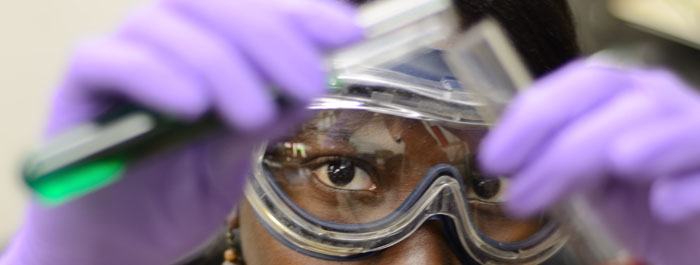

|
When land is severely degraded through intensive agriculture or fires and then abandoned,
it does not always re-grow into forest. In the Virgin Islands we frequently see degraded
lands become dominated by invasive plants like tan-tan and sweet-lime, which can further
slow the recovery of healthy native forest. In these cases, human intervention in
the form of forest enrichment can be beneficial. UVI-AES has developed a low-cost,
highly successful method of reducing the influence of native plants while increasing
the diversity of native plants.
The first demonstration of this method began in 2001 on a hillside dominated by tan-tan and guinea grass. The site was completely cleared and 150 native plants from 14 taxa were planted in a grid. The plot was routinely mowed for 18 months to give the native seedlings a competitive advantage. Although the trees were never watered or fertilized, survivorship was over 80%. Between three and four years the tree canopy closed and shaded out the ground. Today the canopy is over 30 feet tall, there are no invasive plants in the plot and virtually no maintenance is required. In the process of this project, we collected valuable data such as growth rates for each species and time from germination to flowering and seed production. The second experiment began in 2005 with the Nature Conservancy. The goal was to establish native seedlings under similar circumstances, but with reduced labor costs. To this end, 25 artificial gaps (3 meters in diameter) were cleared in a forest comprised primarily of invasive plants. In these gaps 4 seedling from 4 native tree species were planted randomly. One half of the gaps were mulched with hay to further assist seedling establishment. After 18 months survivorship is over 80% and the plot has required almost no maintenance since the day it was planted. In 2007 the Nature Conservancy study was replicated in the U.S. Forest Service experimental forest property in Estate Thomas. This time, a greater diversity of native tree species was used. Preliminary results indicate higher mortality rates for some species and similar growth rates for those species previously tested. Mamey Apple (Mammea americana) seedling planted in Estate Adventure
Student Worker preparing hole to plant Mamey Apple Eugenia ligustrina seedling planted at Estate Adventure |